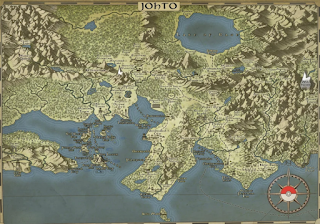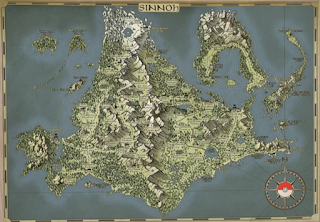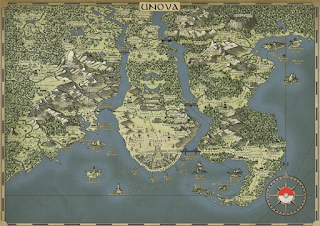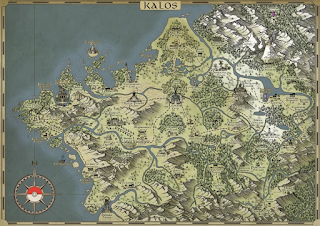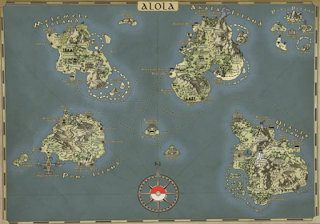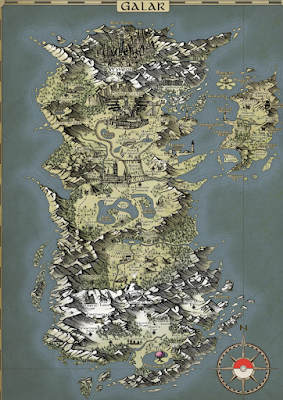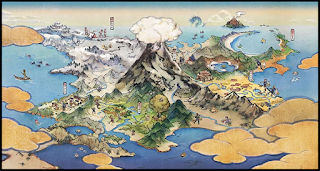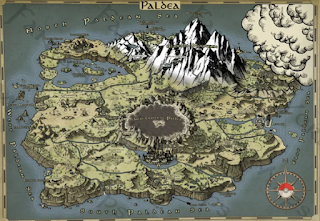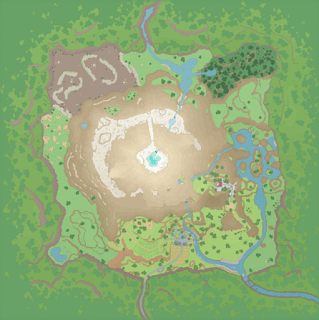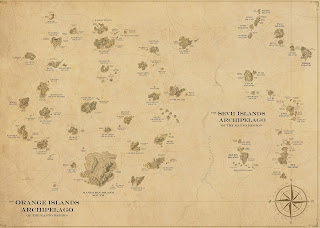In the vast and diverse world of Pokémon, there exists a rare and enigmatic category of creatures known as Mythical Pokémon. These extraordinary beings, often shrouded in mystery, captivate the imaginations of trainers and enthusiasts. This comprehensive guide delves into the world of Mythical Pokémon, providing an in-depth look at these rare and elusive creatures.
What are Mythical Pokémon?
Mythical Pokémon, often referred to as event-exclusive or event-only Pokémon, are a subset of the Pokémon species. They are unique in that they cannot be encountered through standard gameplay in mainline Pokémon games. Instead, trainers must attend special events, participate in distributions, or meet specific criteria to obtain them. Mythical Pokémon are exceptionally rare and serve as key characters in the Pokémon lore.
The History of Mythical Pokémon
The concept of Mythical Pokémon dates back to the second generation of Pokémon games with the introduction of Celebi. Over the years, these special creatures have become an integral part of the franchise's storytelling and world-building. Mythical Pokémon have featured prominently in movies, TV shows, and various spin-off media, further emphasizing their significance.
A Closer Look at Mythical Pokémon
Let's explore some of the most iconic and beloved Mythical Pokémon:
Mew: Mew is often regarded as the original Mythical Pokémon. It's known for its ability to learn every move in the Pokémon games, making it one of the most versatile and mysterious creatures in the Pokémon world.
Celebi: Celebi is a Time Travel Pokémon known for its association with time manipulation and its ability to travel through different eras. It is the guardian of the Ilex Forest in Johto.
Jirachi: Jirachi, the Wish Pokémon, is associated with granting wishes to those who awaken it from its slumber every thousand years. It is known for its signature move, "Doom Desire."
Deoxys: Deoxys is an alien-like Psychic-type Pokémon with different forms, including Normal, Attack, Defense, and Speed Formes. It plays a central role in the Pokémon Mystery Dungeon series.
Darkrai: Darkrai is a Dark-type Pokémon known for its association with nightmares and the ability to induce sleep. It plays a significant role in the Pokémon movie "The Rise of Darkrai."
Arceus: Arceus is often considered the "God" of Pokémon, responsible for creating the Pokémon world. It is associated with the Plate and Jewel items and has a signature move called "Judgment."
Shaymin: Shaymin is known for its alternate forms, including the Land Forme and Sky Forme. It is associated with the Gracidea Flower, which triggers its transformation.
Victini: Victini, the Victory Pokémon, is said to bring victory to trainers who possess it. It has a unique ability called Victory Star that boosts the accuracy of its moves.
Meloetta: Meloetta is a dual-type Normal/Fighting or Normal/Psychic Pokémon with the ability to change forms, switching between its Aria Forme and Pirouette Forme.
Hoopa: Hoopa is known for its ability to summon and transport objects and other Pokémon through its rings. It has Confined and Unbound Formes, each with distinct abilities.
Obtaining Mythical Pokémon
Obtaining Mythical Pokémon can be a thrilling but sometimes challenging endeavor. Trainers often have the opportunity to obtain these Pokémon through special events hosted by The Pokémon Company, such as distributions at select retailers, online events, or codes provided in various promotions. Some Mythical Pokémon are also available through certain Pokémon spin-off games, like "Pokémon GO."
Mythical Pokémon in Movies and Media
Mythical Pokémon are prominently featured in Pokémon movies, where they play central roles in the plot. These movies often explore the backstories and special abilities of these creatures. Beyond movies, Mythical Pokémon make appearances in trading card games, TV episodes, and other Pokémon-related media.
Mythical Pokémon, with their elusive nature and unique abilities, hold a special place in the hearts of Pokémon fans. They represent the extraordinary and the unattainable, inspiring trainers to embark on journeys to capture these legendary creatures. As Pokémon continues to evolve and expand, Mythical Pokémon remain a central part of the franchise, contributing to its rich and diverse world.
FAQ's
1. What are Mythical Pokémon?
Mythical Pokémon are a rare and special subset of Pokémon that cannot be encountered through regular gameplay in the mainline Pokémon games. They are typically distributed through special events, promotions, or in-game methods.
2. How can I obtain Mythical Pokémon?
To obtain Mythical Pokémon, you can participate in official Pokémon events or promotions. These events can involve visiting a physical location, receiving a code from an official Pokémon event, or participating in online distributions.
3. Can I transfer Mythical Pokémon to other Pokémon games?
Yes, you can transfer Mythical Pokémon to other Pokémon games using the Pokémon Bank or the newer Pokémon Home app. This allows you to use these rare creatures in various games.
4. Are Mythical Pokémon legal in competitive battles?
In official Pokémon tournaments and competitions, Mythical Pokémon are not always allowed. These competitions often have specific rules and bans in place to maintain balance. However, they can be used in friendly battles or unofficial tournaments.
5. Can I trade Mythical Pokémon with other players?
Yes, you can trade Mythical Pokémon with other players. This is a common practice among Pokémon enthusiasts and can help you complete your Pokédex or obtain specific Mythical Pokémon.
6. Are Mythical Pokémon more powerful than regular Pokémon?
Mythical Pokémon are not inherently more powerful than regular Pokémon. Their power level varies, just like any other Pokémon, depending on their base stats, moves, and abilities. Some Mythical Pokémon are powerful, while others are more support-oriented.
7. Can I shiny hunt for Mythical Pokémon?
Shiny Mythical Pokémon are incredibly rare and can be obtained through special distributions or events. Shiny hunting for Mythical Pokémon is possible but challenging, as it often requires participation in specific shiny Pokémon events.
8. Are there Mythical Pokémon that are not yet released?
The Pokémon Company continues to release new Mythical Pokémon over time, often coinciding with Pokémon anniversaries or special events. New Mythical Pokémon are periodically introduced to the Pokémon world.
9. Can I use Mythical Pokémon in the mainline story of Pokémon games?
In most mainline Pokémon games, Mythical Pokémon cannot be used in the main storyline until after you've completed the primary game objectives. This is to ensure that players experience the game's challenges before using these powerful creatures.
10. Are Mythical Pokémon featured in the Pokémon movies and other media?
Yes, Mythical Pokémon are often central characters in Pokémon movies. They play significant roles in the plot and are featured prominently in trading card games, TV episodes, and other Pokémon-related media.
11. What are some of the most popular Mythical Pokémon?
Some of the most popular Mythical Pokémon include Mew, Celebi, Jirachi, Arceus, and Mewtwo (which is often regarded as Mythical due to its rarity).
12. Can I obtain Mythical Pokémon through trades with other players in the mainline Pokémon games?
While you can trade Pokémon with other players, Mythical Pokémon are often restricted from direct trades in the mainline games. Players can receive these creatures through special distributions, events, or codes.
13. Are Mythical Pokémon considered to be legendary Pokémon?
Mythical Pokémon and legendary Pokémon are often confused, but they are distinct categories. Legendary Pokémon, like Articuno or Moltres, are typically encountered in-game and are integral to the game's lore, while Mythical Pokémon are rarer and require special methods to obtain.
14. Are there Mythical Pokémon exclusive to certain regions or generations?
Yes, some Mythical Pokémon are exclusive to specific regions or generations of Pokémon games. For example, some are associated with certain regions like Johto, Sinnoh, or Alola, while others are introduced during special anniversary events.
15. Can I obtain past Mythical Pokémon if I missed their distribution events?
The Pokémon Company occasionally re-releases Mythical Pokémon through various distribution events, so missing an initial event doesn't necessarily mean you can't obtain them later. Keep an eye on official Pokémon announcements for updates on these distributions.
16. Are there in-game events or quests related to Mythical Pokémon in the mainline games?
Some mainline Pokémon games feature special in-game events or quests tied to Mythical Pokémon. These quests often involve encountering, awakening, or capturing the Mythical Pokémon as part of the game's storyline.
17. Do Mythical Pokémon have any specific roles in the Pokémon lore or mythology?
Mythical Pokémon often have unique and significant roles in the Pokémon lore, often related to aspects of time, space, wishes, or even the creation of the Pokémon world. Their stories contribute to the rich mythology of the Pokémon universe.
18. Can I obtain multiple Mythical Pokémon of the same species in the mainline games?
In most cases, players can only obtain one Mythical Pokémon of the same species per game, typically through a special distribution event. However, it may be possible to trade for duplicates with other players.
19. Are there any Mythical Pokémon that are particularly challenging to obtain?
Some Mythical Pokémon may be more challenging to obtain due to limited-time distribution events or exclusive distributions in certain regions. Patience and diligence are often required to collect them all.
20. Can I use Mythical Pokémon in online battles or competitions?
The eligibility of Mythical Pokémon in online battles or competitions varies depending on the specific rules set by the event or tournament. Some events allow Mythical Pokémon, while others do not.
21. How do Mythical Pokémon contribute to the diversity and excitement of the Pokémon franchise?
Mythical Pokémon enrich the Pokémon world by adding an extra layer of rarity, mystery, and intrigue. Their limited availability and unique abilities make them sought-after additions to a trainer's collection.
22. Can I use Mythical Pokémon in the Pokémon Sword and Shield games or other newer titles?
Mythical Pokémon can be transferred into the Pokémon Sword and Shield games and other newer titles using the Pokémon Home app, making them accessible in the latest Pokémon games.
23. Do Mythical Pokémon have unique abilities or moves not found in regular Pokémon?
While some Mythical Pokémon have signature moves or abilities, they generally use abilities and moves that are part of the standard move and ability pool. However, their uniqueness often lies in their rarity and event-specific distributions.
24. Are there any specific storylines or events in the mainline games dedicated to Mythical Pokémon?
Some mainline Pokémon games feature dedicated storylines or events that revolve around Mythical Pokémon. These can involve uncovering the history or significance of the Mythical Pokémon within the game's narrative.
25. Can I obtain Mythical Pokémon through trading or battling with other players online?
You can trade Mythical Pokémon with other players using online trading features, such as the Global Link system or Pokémon Home. Battling with Mythical Pokémon is also possible in online battles, depending on the competition's rules.
26. Are there official events or distributions for Mythical Pokémon that I should be aware of?
The Pokémon Company regularly hosts official events and distributions for Mythical Pokémon. Keep an eye on Pokémon news and official websites for announcements about upcoming events where you can obtain these rare creatures.
27. Can I receive Mythical Pokémon in multiple games with the same code or distribution event?
The availability of Mythical Pokémon through a single code or distribution event is typically limited to one per game. To obtain multiple copies, you may need to attend multiple events or trade with other players.
28. Are there fan-made or unofficial Mythical Pokémon creations?
While there are unofficial Pokémon-like creatures created by fans and in fan-made games, true Mythical Pokémon are exclusive to the official Pokémon games and media. These creations are not officially recognized by The Pokémon Company.
29. Do Mythical Pokémon have any impact on the competitive Pokémon battling scene?
Mythical Pokémon can have an impact on competitive battling, as their unique abilities and move sets can change the metagame. Players often adapt their strategies to include or counter these rare and powerful creatures in battles.
30. Are there any differences in the availability of Mythical Pokémon between different regions or countries?
The availability of Mythical Pokémon can vary between regions and countries due to different event distributions. Some Pokémon may be region-exclusive or distributed in different ways in various parts of the world.
31. Can I transfer Mythical Pokémon to Pokémon Home and use them in multiple Pokémon games?
Yes, you can transfer Mythical Pokémon to Pokémon Home, and from there, you can use them in various Pokémon games that are compatible with Pokémon Home, including the mainline titles and Pokémon GO.
32. Are Mythical Pokémon limited to a specific generation of Pokémon games?
Mythical Pokémon are not strictly tied to a particular generation of games. The Pokémon Company continues to release Mythical Pokémon throughout different generations, often celebrating anniversaries or special occasions.
33. Can I use Mythical Pokémon in the Battle Tower or Battle Frontier of the mainline games?
The eligibility of Mythical Pokémon in battle facilities like the Battle Tower or Battle Frontier can vary between games and may depend on the specific rules and restrictions of the facility.
34. How do Mythical Pokémon contribute to the lore of the Pokémon world?
Mythical Pokémon often play essential roles in the lore of the Pokémon world, representing various aspects of nature, legends, and the history of the Pokémon universe. Their stories add depth and mystery to the overall narrative.
35. Can I trade Mythical Pokémon with players from different regions or countries?
You can trade Mythical Pokémon with players from different regions or countries using the online trading features in Pokémon games. However, some event distributions may be region-locked, making certain Mythical Pokémon harder to obtain in different parts of the world.
36. Are there any special Mythical Pokémon events held at Pokémon-themed conventions or expos?
Yes, Pokémon-themed conventions and expos often host special events or distributions where attendees can obtain Mythical Pokémon. These events are a great way for fans to get exclusive creatures.
37. Can I use Mythical Pokémon in my Pokémon team for the Elite Four or Champion battles in the mainline games?
In most mainline Pokémon games, you can use Mythical Pokémon in your team for the Elite Four and Champion battles once you've obtained them through events or distributions. However, rules may vary between games and tournaments.
38. Are there any Mythical Pokémon that can evolve into other forms or species?
Mythical Pokémon typically do not evolve into other forms or species. They are usually standalone creatures with unique characteristics.
39. Are there Mythical Pokémon that are considered mascots of specific regions or generations?
Some Mythical Pokémon are indeed considered mascots for specific regions or generations. For example, Mew is often associated with the first generation of Pokémon games, while Arceus has ties to the creation mythology of the Pokémon world.
40. Can I use Mythical Pokémon in Max Raid Battles or other cooperative features in recent Pokémon games?
In Pokémon Sword and Shield, as well as other recent titles, Mythical Pokémon can be used in Max Raid Battles and other cooperative features. These battles can be an opportunity to showcase their abilities in team settings.
41. What are some common misconceptions about Mythical Pokémon?
Common misconceptions about Mythical Pokémon include the idea that they are all overpowered (they vary in power), that they are all obtainable through standard gameplay (they're not), and that they are the same as legendary Pokémon (they're a distinct category).
42. Can Mythical Pokémon be shiny?
Yes, Mythical Pokémon can be shiny, but they are incredibly rare in their shiny form, just like other Pokémon. Shiny Mythical Pokémon often have unique distributions or events tied to them.
43. Do Mythical Pokémon have a special place in the Pokémon trading card game (TCG)?
Yes, Mythical Pokémon are often featured in special Pokémon TCG sets and promotional cards. These cards can be highly collectible and sought after by TCG enthusiasts.
44. Are there any special requirements for obtaining Mythical Pokémon in the Pokémon GO mobile game?
In Pokémon GO, Mythical Pokémon are often available through limited-time research tasks, special research quests, or as part of event raids. Players need to complete specific tasks or participate in events to encounter and catch them.
45. Can I transfer Mythical Pokémon from earlier generations to the current Pokémon games?
You can transfer Mythical Pokémon from earlier generations to the current Pokémon games using the Pokémon Home app, provided that these Pokémon are compatible with the specific game's Pokémon roster.
46. Are there any fan-created myths or legends about Mythical Pokémon?
The Pokémon community often creates fan theories, myths, and legends about Mythical Pokémon, adding to the lore and intrigue surrounding these creatures. Some fans speculate about their origins, powers, and connections to the Pokémon world.
47. Do Mythical Pokémon have any exclusive features or abilities in the Pokémon Snap games?
In the Pokémon Snap games, Mythical Pokémon can sometimes be found in unique locations or during special events. Capturing their behavior in these games can be a rewarding experience.
48. Can I breed Mythical Pokémon in the mainline games to obtain more of them?
In most cases, Mythical Pokémon cannot be bred to obtain more of them. They are typically only available through special distributions, and breeding them is restricted.
49. How can I stay updated on upcoming Mythical Pokémon events and distributions?
To stay informed about upcoming Mythical Pokémon events and distributions, it's a good idea to follow official Pokémon announcements, visit the official Pokémon website, and engage with the Pokémon community through forums and social media platforms.
50. Are there any plans for new Mythical Pokémon to be introduced in the future?
The Pokémon Company continues to introduce new Mythical Pokémon in celebration of Pokémon anniversaries and special events. Fans can anticipate the release of additional Mythical creatures as the franchise evolves.
51. Can Mythical Pokémon be Gigantamax forms in the Pokémon Sword and Shield games?
As of my last knowledge update in September 2021, Gigantamax forms were not typically associated with Mythical Pokémon. However, it's possible that future updates or games may introduce Mythical Pokémon with Gigantamax forms.
52. Are there any Mythical Pokémon that have been featured as central characters in Pokémon movies more than once?
Yes, some Mythical Pokémon have appeared in multiple Pokémon movies. For example, Mewtwo has been featured in several films, making it one of the most recognizable Mythical Pokémon in the cinematic universe.
53. Can I encounter or obtain Mythical Pokémon in the Pokémon Mystery Dungeon series of games?
Mythical Pokémon have made appearances in some Pokémon Mystery Dungeon games. They are often part of special storylines or post-game content, offering unique challenges for players.
54. Are there any Mythical Pokémon with multiple forms or transformations, similar to Deoxys or Hoopa?
Yes, some Mythical Pokémon have multiple forms or transformations. For instance, Shaymin has Land Forme and Sky Forme, and Meloetta can switch between Aria Forme and Pirouette Forme. These transformations may come with changes in abilities and moves.
55. Can I use Mythical Pokémon in the Pokémon contests or showcases featured in certain games?
The eligibility of Mythical Pokémon in Pokémon contests or showcases can vary between games. Some games may allow Mythical Pokémon to participate, while others may have restrictions in place.
56. Do Mythical Pokémon have specific lore or legends tied to particular regions within the Pokémon world?
Mythical Pokémon often have lore or legends associated with specific regions, locations, or aspects of the Pokémon world. These stories can add depth to the regions they are connected to.
57. Can I obtain Mythical Pokémon through certain challenges or achievements in Pokémon games?
Some Pokémon games offer challenges or achievements that reward players with Mythical Pokémon. For example, completing specific Pokédex entries or in-game tasks can lead to Mythical Pokémon encounters.
58. Can I nickname or rename Mythical Pokémon I obtain in the games?
In most Pokémon games, you can nickname Mythical Pokémon once you've obtained them. This allows you to personalize your rare creatures.
59. Are there any Mythical Pokémon that are part of a specific trio or group?
While some Legendary Pokémon are part of trios or groups, Mythical Pokémon are often standalone creatures with unique characteristics and roles in the Pokémon world.
60. Do Mythical Pokémon have a specific role in the Pokémon Trading Card Game (TCG)?
In the Pokémon TCG, Mythical Pokémon often appear in special sets or promotional cards. These cards may have unique abilities, artwork, and collector's value.
61. How does The Pokémon Company decide which Pokémon to classify as Mythical?
The Pokémon Company's decisions on which Pokémon to classify as Mythical can depend on various factors, including the Pokémon's lore, role in special events, and its significance to the franchise.
62. Can I transfer Mythical Pokémon from older Pokémon games that are not compatible with Pokémon Home into the newer games?
The compatibility of transferring Mythical Pokémon from older games into newer ones depends on the specific games and their compatibility with Pokémon Home. Some older games may not be compatible with the transfer process.
63. Are there any Mythical Pokémon that have not yet been made available to players in the mainline games?
The Pokémon Company may introduce new Mythical Pokémon in the future that have not yet been made available to players. These releases are often tied to special events and celebrations.
64. Can I use Mythical Pokémon in official Pokémon video game tournaments or the Pokémon VGC (Video Game Championships)?
The eligibility of Mythical Pokémon in official Pokémon tournaments or the Pokémon VGC can vary between events and seasons. Some seasons may allow Mythical Pokémon, while others may have specific bans in place.
65. Are there any Mythical Pokémon that have regional variants, similar to Alolan Forms in the Alola region?
As of my last knowledge update in September 2021, there were no Mythical Pokémon with regional variants. However, Pokémon games continue to evolve and introduce new concepts, so it's possible that regional variants of Mythical Pokémon could be introduced in future games.
66. Can I obtain Mythical Pokémon in spin-off games like Pokémon GO, Pokémon Masters, or Pokémon Mystery Dungeon?
Yes, Mythical Pokémon have made appearances in various spin-off games like Pokémon GO, Pokémon Masters, and Pokémon Mystery Dungeon. These games often feature special events or storylines related to Mythical Pokémon.
67. Are there any fan-driven initiatives or community events related to Mythical Pokémon?
Yes, the Pokémon community often hosts events, giveaways, and discussions related to Mythical Pokémon. Fan-driven initiatives celebrate these rare creatures and promote awareness of their lore.
68. Can I obtain Mythical Pokémon in Pokémon spin-off games like Pokémon Snap or Pokémon Conquest?
Mythical Pokémon may make appearances in Pokémon spin-off games like Pokémon Snap, often as special and challenging encounters within these games.
69. How do Mythical Pokémon contribute to the world-building and storytelling of the Pokémon games?
Mythical Pokémon play a significant role in the world-building and storytelling of the Pokémon games. They often tie into the game's lore, history, and special events, providing depth to the Pokémon world.
70. Can I shiny hunt for Mythical Pokémon in the mainline games, similar to hunting for shiny wild Pokémon?
Shiny hunting for Mythical Pokémon in the mainline games can be challenging and is often limited to specific distribution events where shiny versions are made available to players.
71. Can I use Mythical Pokémon in Pokémon breeding to obtain eggs or baby Pokémon?
Mythical Pokémon typically cannot be used in Pokémon breeding to obtain eggs or baby Pokémon. They are often exempt from breeding mechanics.





